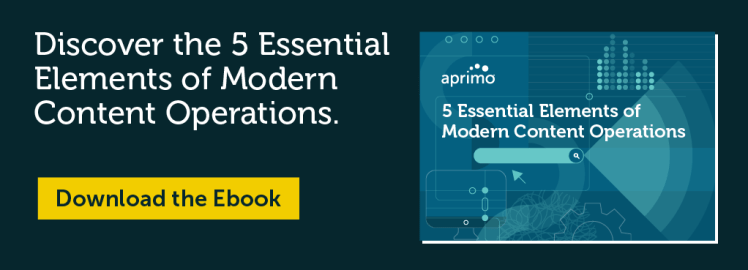Data librarians do more than set up cloud servers or write access policies. In fast-growing organizations, they harness the full potential of data and tame the chaos of an ever-expanding content collection.
To harness the potential of your internal content, you need a mix of strategy, tools, and insight. If you’re overwhelmed by the start of your content management journey, this article is for you. Read on to learn the basics of building and executing a new or improved content management strategy:
- What is content management strategy?
- Why should your organization use a content management strategy?
- What are the elements of a content management strategy?
- What are the steps for building a content management strategy?
What is a Content Management Strategy?
A content management strategy is a plan of action on how a business creates, organizes, and coordinates digital content across different social media and marketing channels. It includes strategies to optimize the user experience, increase visibility, secure data, conduct analysis, and track performance.
Content management strategies also help businesses maximize their return on investment and effort. With the correct strategy in place, marketers develop on-target content for customers and deliver it at the right moment for their target audience. Content management strategies are key to driving overall business success and growth.
Why You Need a Content Management Strategy
There are many immediate benefits of a solid content management system. It creates better access to valuable types of content and data, increases opportunities to collaborate and peer-review assets, enables those publishing content, and ensures you maximize the value of your content libraries. Content management also sets an organization up for long-term scalability and success.
Consider seven top benefits of building a stronger content management approach:
More productivity: Organized and well-implemented content management creates visibility into your assets and content libraries. It breaks down the silos and shadows content operations by providing a central source of truth. No more versions of content squirreled away in email threads or laptop hard drives. Your teams will have access to templates, style guide information, and other tools to empower their content marketing efforts.
Increased automation opportunities: Structured content management and governance make automation and software-enabled management possible. It also enables communication and collaboration tools that improve content production speeds while maintaining brand integrity and messaging.
Improved employee onboarding: When you build a repeatable process for all your content operations, it’s easy to document and introduce the system to new hires. You’ll ensure that every employee knows how to create and handle digital assets from day one.
Content optimization: Content that hides in folders or emails isn’t used to its full potential. Build your content management strategy around contextual search, discoverability, and centralization, and you’ll have access to every piece of content for personalization, reuse, and omnichannel distribution of web content, landing pages, video content, podcasts, social media, webinars, and more.
Faster time to market: You build a competitive advantage when you find and create new content easily. Well-organized content and a solid, repeatable production process allow content and creative teams to build campaigns quickly and get them into the market more easily.
Better data governance: Strong organization and data control practices balance the need for stakeholder access with the business’s need for security. Content management strategies don’t just deal with how things are organized. They also cover what encryption and security restrictions will be used to keep sensitive information safe. A strong content management policy goes hand in hand with strong security standards.
Data-informed decisions: Organizations that apply structure and policy to their content handling have far more data available than those who don’t. Well-controlled content is easier to analyze for performance. This gives marketers and program managers valuable insights that drive better decisions and outcomes.

Elements of a Content Management Strategy
Constructing a sound content strategy involves considering every aspect of the content lifecycle and planning how and when processes should occur. Content strategists and librarians consider the following elements when establishing a content management strategy:
Data structure is the organizational framework used to identify assets, categorize them, enable contextual search through metadata and tagging, and more. Organizations empower data librarians to create hierarchal database structures and taxonomies to make data easy to find, use, and store.
Content creation is the effort of your content team to bring omnichannel content to fruition. Teams focus on developing great content for the audience in each channel, following brand guidelines, and maintaining consistent messaging.
Asset storage is the location and methods used to store assets and data within the organization. This may occur on on-premise servers, or more commonly through cloud-based storage solutions and content management platforms.
Production workflows are automated methods of taking content through the production and distribution lifecycle. It includes planning development, resource allocation, work management processes, collaboration, and approvals. These workflows ensure every piece receives review and approval before distribution.
Version control is the ability to prevent duplication and shadow content operations from taking place, while still allowing multiple stakeholders to edit and interact with the content.
Distribution is delivering finished assets or modular content for external stakeholders, end users, or across channels for digital marketing. On the other side, sunsetting is removing content from distribution and use and either embargoing it or deleting it to reduce digital clutter.
Data governance restricts the use or access to individual assets or content sets. This may include control mechanisms such as digital rights management (DRM), licensing restrictions, role-based access control, geographic-based restrictions, or other guardrails that prevent unauthorized or inappropriate use of individual assets.
Steps to Implementing a Content Management Strategy
Careful planning is imperative to developing and executing a new or improved strategy for content management. Planning a new content management process requires input from many stakeholders to ensure you fully understand and execute a process that creates value and makes life easier for your internal and external stakeholders.
Follow these steps to create or refine a content management strategy for your organization:
1. Build a business case for your strategy
Create an effective business case for your desire to implement a content management strategy. It should emphasize the benefits of moving to better content management:
- Data centralization
- Scalability of content operations
- Projected cost savings or value creation
- Return on investment (ROI)
- Return on Effort (ROE)
2. Identify the scope of your project
Define key areas of focus and priorities for the content management project. To outline the scope, ask some questions about the business objectives of the project and the current content management practices in place:
- What technology is in place for managing content?
- How are digital assets used across the organization currently?
- What resources do stakeholders have for content operations?
- What channels or departments are included in the new strategy?
3. Enlist stakeholders and champions for input
Content management touches many aspects of the organization, from budgeting and resource allocation to creative production and marketing. As such, stakeholders from these areas provide valuable input into a new content management project.
Champions also pave the way for the adoption of your improved methods. They provide valuable insight into the need for change and the methods of achieving it. Your champions will build consensus and foster buy-in, so include them early in the development process to inform messaging around the changes.
4. Create an implementation plan
With the above business goals and considerations in mind, map out a rough plan and timeframe for implementation. Analyze changes to processes or technical resources needed to complete the project as outlined. Once you have a clear picture of what needs to be done, you can set a timeline and build out a plan for success.
5. Establish change management
New processes that enjoy organizational support have higher success rates. In fact, those with excellent change management are six times more likely to meet objectives than those with poor change management, according to research from Prosci. Post-implementation tasks like evaluating outcomes against success criteria, collecting feedback from stakeholders, making course corrections, and reinforcing positive behaviors increase the likelihood that your stakeholders will integrate new processes successfully.
Strengthen your content management strategy
No matter your company size or digital asset volume, scalable content management relies on the right content and tech tools. Aprimo digital asset management (DAM) creates the best environment for corporate data governance and production and helps you begin to elevate your content management strategy to your customer experience strategy.
Aprimo’s robust content management features enable data librarians and creative teams to do their best work:
- Highly searchable data for easy access to the right assets and content sets.
- Collaboration and workflow functionality to ensure effective content review and approval.
- Performance metrics and data-enriched asset profiles for full visibility into content success.
If better content management is a priority for your organization, start by checking out our 5 essential elements of content operations.


